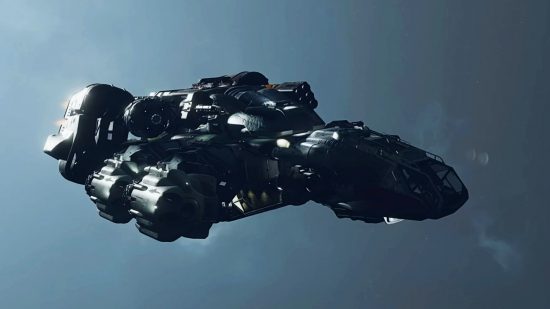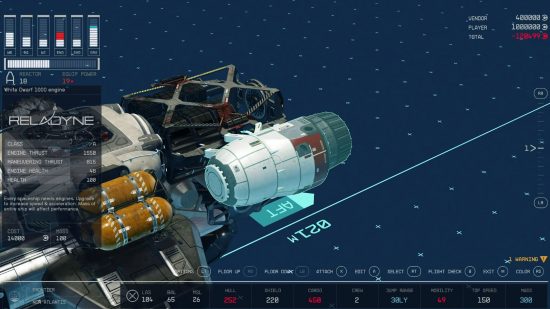I’m really worried about Starfield’s spaceship customisation. When Fallout 4’s settlement-building system was unveiled in 2015, it looked set to answer every prayer I’d ever had for the sequel, providing both a way to leave a meaningful mark on the world and bolting a hundred or so additional hours onto my playtime. What I didn’t expect was for it to spoil my relationship with the core game: I didn’t get to be whatever post-apocalyptic character I wanted to be in Fallout 4, instead, I had to play mayor or face a bombardment of disapproving Pip-Boy notifications.
Starfield is adding another wrinkle to this system in the form of a massive, modular spaceship customisation system. In the Starfield gameplay trailer from 2022’s Xbox and Bethesda showcase, we can see skills attached to ship-building, several different parts manufacturers, and 14 module categories, each seemingly boasting upwards of ten unique options. And you can paint it all however you like, too, just to throw a spanner in the works for aesthetes.

It doesn’t look like it’s a system you’ll be able to ignore. Space dogfights are a thing, and there’s no way Bethesda went through all the effort of developing a flight-based combat system if it didn’t want it to form a significant component of Starfield’s gameplay.
Whether or not the combat will be any good by the time the Starfield release date rolls around is beside the point, it’ll still demand time and effort, and when it starts getting tough you’re going to have to customise your ship to gain an edge. I dread the moment I have to open that customisation screen for the first time, pulling me away from the various plot threads I’m unravelling and showering me with so many choices and stats that they can’t possibly all matter.
I mean, just look at the UI. Across the bottom, there are figures for laser, missile, and ballistic weapons; you can see scores for your hull, cargo, crew, shield, jump range, mass, mobility, and top speed; and a single information panel for an engine module lists its class, amounts of engine and manoeuvring thrust, engine health and the module’s overall health. There’s even a stat for your reactor that appears to determine how many modules you can power – that’s right, your ship can be over-encumbered.
Having to engage with all of that sounds more like a headache than a one of the best Xbox RPGs. If I’m going to roleplay as an intrepid space explorer, then I want to be the one who buys their ship from some shady merchant on some godforsaken dust planet, not the Settled Systems’ answer to Xzibit. By all means, provide players with options that make sense for the character they’re playing, but does Constellation’s greenest initiate need to be a master engineer?
Hopefully, there’s a shortcut or workaround. A couple of dozen pre-built spaceships or some unique schematics to be collected as quest rewards – just enough to choose between being faster, more durable, or more deadly.
It’s not just a particularly busy ship customisation menu, it’s what it potentially tells us about Starfield: that this isn’t really an RPG at all. Or if it is, then it’s a very diluted one.
The fact that there are more than twice as many lines of dialogue in Starfield than in Fallout 4 sounds impressive, but when we’re talking about an open world with 1,000 planets it’s not hard to imagine all that richness being watered down. An exhaustive ship-building suite, in which you can unlock new modules with credits or perk choices, feels like a similarly thin solution to a world that’s too large for handcrafting. It looks enormous and has many options, but no ship you craft in that system will deliver as much satisfaction as one with a storyline, choice, or discovery attached to it.
What that settlement-building system in Fallout 4 started was Bethesda’s gradual shift towards making sandbox games instead of RPGs. We know that higher play times are linked to players spending more money, and we know that Bethesda and Microsoft want to keep people invested in Game Pass for as long as possible, so this all makes perfect sense – it’s just not attractive.
Options that reflect the choices I make within the world are what I hope for from a roleplaying game, not just a mail-order catalogue that it’ll take hundreds of hours to grind through.


